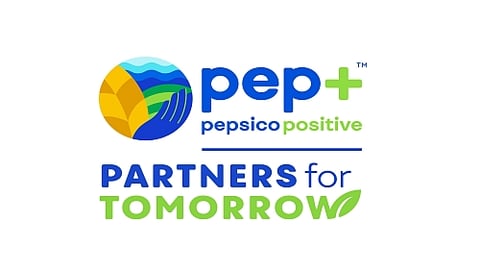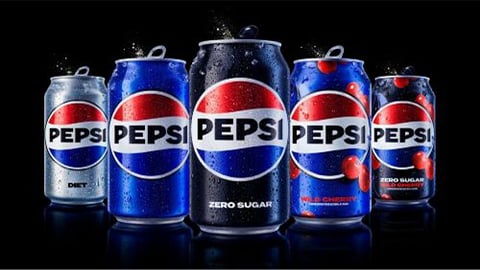EXCLUSIVE: How PepsiCo Is Cracking the Code for 1-on-1 Customer Engagement
If a picture is worth a thousand words, it can be invaluable in data that works both ways for consumers and brands. PepsiCo’s on-package digital QR codes are one example, providing curated engagement for shoppers throughout their buying and consumption journey and delivering insights back to the business.
By scanning the QR code, known as the GS1 Digital Link 2D barcode, consumers can access information on a product's nutrition facts, allergens, ingredients, sustainability features, loyalty rewards and more. The code is essentially a digital launchpad that leads to a personalized experience from a single SKU. Progressive Grocer recently talked with John Phillips, SVP of customer, supply chain, global to market at PepsiCo, about the QR code that’s accompanied the rebranding of the company’s lemon-lime soda from Sierra Mist to Starry.
[Read more: "PepsiCo Launches New Sustainability Platform for Shared Progress"]
Progressive Grocer: If you had to describe the scope and scale of the GS1 Digital Link 2D Barcode, how would you compare it to some of the biggest overall packaging technology developments? In other words, how big is this?
John Phillips: As we celebrate the 50th anniversary of the UPC barcode in 2023, we are also beginning the journey to replace it with an exciting next generation of technology. This transition will create an unprecedented opportunity to transform how consumers digitally engage with their favorite products. Consumers are seeking much more information about the products they buy, and new 2D data carriers are enabling us to unleash an exciting new era of SMART packaging.
The new GS1 Digital Link 2D barcode enables new capabilities to expand consumer engagement and provide a curated experience tailored to the individual product. This framework will allow expanded sharing of nutritional, brand, allergen, sustainability, recycling, loyalty programs, and other consumer-centric information. PepsiCo is working to inspire and share our vision to fuel this global transformation to SMART packaging across the CPG industry. The GS1 Digital Link capabilities are 10X what we experienced when we launched the current UPC barcode.
PG: How does this innovation reflect a convergence of market demands and trends, encompassing sustainability, convenience, health/wellness/food safety (allergens) and marketing opportunities?
JP: As the consumer continues to become more digitally minded, the use of smartphones has become ubiquitous in most consumer product transactions. Consumers now routinely rely on digital sources to discover new products and research product information, make purchase decisions, and engage with the brands that they love. Consumers are also demanding increased product information transparency beyond the information that is traditionally printed on product labels. By enabling a seamless link between a physical product and the digital world, the GS1 Digital Link unlocks access to an unlimited range of product related digital information and experiences.
Manufacturers will also be able to leverage the digital capabilities of 2D barcodes to alert consumers, almost instantly, to product recalls as well as other food safety information that is critical for consumers to have in a timely fashion.
Additionally, as all companies elevate their sustainability focus, leveraging SMART Packaging and digital disclosure can significantly reduce waste and packaging obsolescence. At the same time, these frameworks can put more comprehensive product information in the hands of consumers than we have ever experienced in our lifetime. This can be done in a curated way, making it easier for consumers to navigate versus looking at a package that looks like the sponsorships on a NASCAR.
PG: How is this code also an example of a tech-driven innovation that is user friendly for consumers, from digital natives to older consumers?
JP: The use of QR codes has become ubiquitous in our smartphone-enabled world. COVID has made all of us QR code experts in scanning them to access restaurant menus, airline boarding passes, payment apps, etc. Consumers across all demographics have become comfortable with the reality that scanning a QR code provides instant access to the information and services they seek. By combining QR codes with our PepsiCo-innovated curated menu experience, consumers across the FMCG industry can now self-navigate to a wide range of digital content and experiences related to the products they consume. This capability is native to every smart device with a camera, does not require an app or special software, and is intuitive for today’s digitally savvy consumers.
PG: What are some, if any, potential consumer challenges related to this Smart Packaging technology, i.e., consumer wariness about privacy? If so, how can PepsiCo address concerns?
JP: There is always a balance between the amount of personal information consumers are willing to share and the type of digital experiences that can be enabled. Consumers will ultimately set this balancing point and will no doubt evolve with time. Experiences that require personally identifiable information (PII) will follow established opt-in processes. The majority of what we have been sharing around SMART Packaging does not need to know who the consumer is to enable the experiences.
PG: From a personal standpoint, when you look at your career in the CPG industry – and even as a business undergrad at Western Michigan University – could you/how could you foresee the role that tech would play in both improving the consumer experience and helping businesses reach their targets?
JP: From early on in my undergraduate experience at Western Michigan University, I was always at the forefront of experiencing new technologies. I remember purchasing my first IBM PC in college with dual 5.25-inch floppy drives for programs and data. I have continued being curious about new technologies and how to leverage them in business processes to drive topline and bottom-line efficiencies. Western Michigan’s Food and Consumer Package Goods Marketing Program does a great job developing the technology literacy that future CPG industry leaders will need to succeed.
What has changed in more recent years is we are all walking around with personal computers in our pockets. I regularly refer to the data point that we now have more computing technology on our smartphones than Apollo 13 had to make it into space.
For the past several decades, we have been aware that driving efficiency in our industry is based on the need for data and information to flow across the value chain in parallel with the physical products that we sell. Our focus has traditionally been on leveraging data and information to improve B2B processes and transactions. In more recent years, as the consumer has become more digitally savvy, we have realized the potential for product-related data and information to transform how we interact with the consumer.
The industry transformation PepsiCo is leading with QR codes, GS1 Digital Link, and our curated interactive content menu experience is just scratching the surface of what is possible in the future. We believe we have unlocked a framework that will enable future innovation, and it is anyone’s guess where this can take us!












